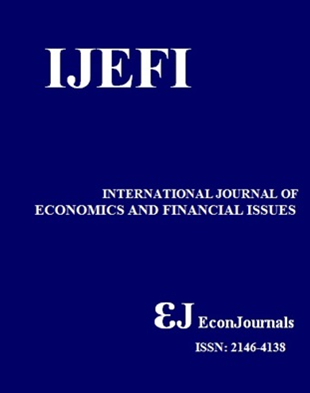Microfinance Banks Utilization of Information Cues in the Prediction of Loan Default and Credit Risk in Nigeria: The Lens Modelling Approach
DOI:
https://doi.org/10.32479/ijefi.17171Keywords:
Microfinance Banks, Default/Credit Risk, Cues Utilization, Prediction, NigeriaAbstract
Credit risk has substantially increased in the last few years in most Microfinance banks in Nigeria even with layout mechanisms to checking this. This study was therefore focused on exploring the information cues utilized by loan officers in correctly predicting default and credit risk. 207 Microfinance banks from the six geo-political zones of the country were selected and used for the study and the loan officers were purposively selected in the administration of the questionnaire. This formed the judgment criterion of the model. 207 borrowers were also selected for the study. This group made up the environment criterion. The Lens Modelling approach was deployed in analyzing both criteria using default and/or credit risk cues such as borrowing capacity, interest rate, and appraisal procedure used in screening potential borrowers, banks’ monitoring plans for borrowers, and the number of active borrowers on the banks’ repayment calendar. Analyzed results showed that there was a high linear predictability of the judgment criterion (R2s = 0.879) and the environment criterion (R2e = 0.977). The achievement index of 0.943 further confirmed that the loan officers were consistent in their predictions of defaulting clients using the determining variables. Consequently, the study suggests an in-depth review of the root causes of default and/or credit risk as this study revealed that the loan officers had a firm grasp of the information cues that could predict credit risk and showed that the increased default rate was probably due to other factors outside their control.Downloads
Downloads
Published
2025-02-17
How to Cite
Ajah, E. A., Asuquo, I. A., Agbachom, E. E., Ettah, O. I., & Eyo, E. O. (2025). Microfinance Banks Utilization of Information Cues in the Prediction of Loan Default and Credit Risk in Nigeria: The Lens Modelling Approach. International Journal of Economics and Financial Issues, 15(2), 220–225. https://doi.org/10.32479/ijefi.17171
Issue
Section
Articles
Views
- Abstract 89
- FULL TEXT 117




